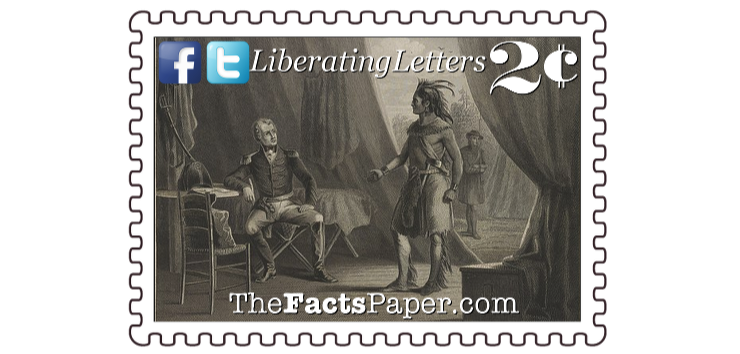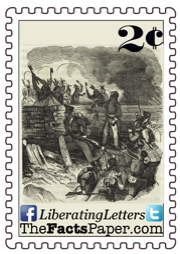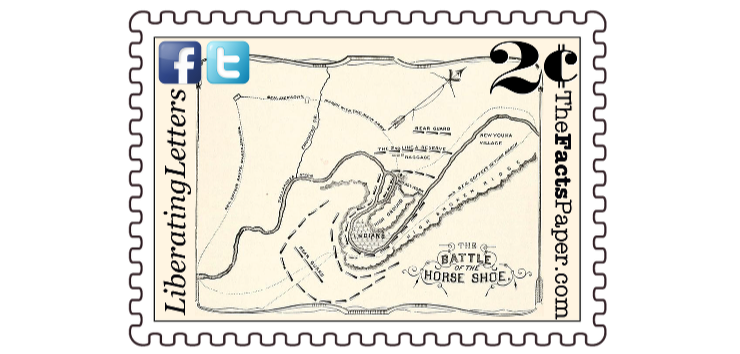With the massive defeat and Chief Weatherford’s surrender at Fort Jackson, the Creek Civil War ended. Over the next several months, Jackson worked with both the Upper and Lower Creek leaders to negotiate a treaty. Despite their support, Jackson forced his Lower Creek allies to surrender millions of acres of land to the United States under the umbrella of security. Like the settlers, Jackson decided to not separate the two groups of the Creek Nation, deeming them all as inferior. The Treaty of Fort Jackson signed on August 9, 1814, ceded more than 21 million acres of native land to the United States government. This land includes half of Alabama and a portion of southern Georgia. Furthermore, Jackson grabbed an additional 1.9 million acres of Cherokee Nation hunting grounds, another American ally in the Creek War. Yet this was just the beginning of his attack on American Natives. As a reward for the treaty, Jackson was promoted to Major General as his war hero status developed.
Feeling confident, Jackson headed to the Gulf Coast region to engage in the War of 1812. Red Stick Creek survivors fled to Pensacola, finding refuge, supplies, and training from a British force. Invading Spanish Florida under his own desire without orders, Jackson attacked Pensacola and defeated the British stationed there on November 7, 1814. His impetuous act led to the Battle of New Orleans two months later on January 8, 1815. Jackson’s decisive victory over the British here prompted military leaders to forgive his previous actions even though the war ending Treaty of Ghent was signed on Christmas Eve a week earlier.
Jackson continued to battle natives, finding himself in Florida again in the Spring of 1818. Creek natives, known here as Seminoles, relocated to northern Florida at the end of the 18th Century. Joining with runaway slaves and free Africans, known as Black Seminoles, the group allied with the British through the War of 1812. Tensions rose as Georgia militias and Seminoles conducted raids looking for goods, land, runaway slaves, and retaliation. The U.S. gave Jackson the command of the forces in the area, leading to the First Seminole War. Taking both the Spanish military post at present day St. Marks as well as Pensacola, Jackson’s victories resulted in the 1819 Transcontinental Treaty surrendering Spanish Florida to the United States.
After an extremely contentious election in 1824, war-hero Jackson broke from the Democratic-Republican Party, becoming the “Father of the Democratic Party”. (see History Rhymes Again and The Birth Of A Mascot) Winning election in 1828, Jackson entered office a poor man. President George Washington governed under the concept of Divine Providence, believing if we follow God, conduct ourselves under His guidance, and form society by leading by example, He would bless our efforts. (see God’s Divine Providence) Jackson redefined America’s focus, promoting the concept of manifest destiny and transforming society through force and domination. (see Satan’s Manifest Destiny) Therefore, Jackson concocted a land-grabbing scheme, which resulted in extreme wealth for him and his friends as he shoved Native Americas farther and farther west. (see Doctrinally Sound)
Jackson’s policies culminated with his Indian Removal Act of 1830. Despite Georgia Cherokee winning a Supreme Court decision that America could not enforce such Acts upon native nations, Jackson ignored the ruling and moved forward with his agenda, overtaking native lands. By this time, Alabama’s civilian population had exploded and hopes of recapturing tribal independence were gone. His successor, President Martin Van Buren, a co-founder of the modern-day Democratic Party, sent the military in to forcefully remove the Cherokee Nation, as well as other tribes, westward to Oklahoma on the “Trail of Tears,” starting in 1836.
Liberty, it’s two hundred years later and we have learned nothing from our past. The left has chosen violence and brutality in their approach, just like the Red Stick Creeks, attacking and silencing those on the right who do not conform to their ideology. (see There’s Nothing Right About The Alt-Right) Likewise, it is the same mindset of Jackson’s manifest destiny, where advocates promote societal reform through force and suppression. The Democratic Party leadership has not changed since its inception, except today they call their ideology democratic socialism. (see Communism's Rise)
While many like to persecute and forever condemn white Americans for the sins of our ancestors, mistakes were made by everyone. Today, the Russians are successfully dividing America through Social Media as they purposely promote information that pits citizens against each other. The British manipulated the Native Americans the same way, encouraging them to use violence against the settlers instead of diplomacy. Motivated by their own desire to reclaim America, if Britain would have succeeded, they likely would have treated the natives the exact same way Jackson treated his Indian allies after Horseshoe Bend.
Despite such disgraceful periods in our history, Americans have always found ways to unite, embrace common sense, and work together to be better. (see It Just Takes Common Sense) Bringing millions in this country and the world out of poverty, America has been a “shining city upon a hill,” a light and guide of Divine Providence. But like Jackson, there are those in power in our own country who want to extinguish that light, fundamentally transforming America through coercion, harassment, threats, and outright violence. Ironically, the same people denouncing America for what she did to the Indians are the same ones blindly following the man who did it, belonging to the political party he started, while using his exact same tactics on others. (see Civil Rights…And Wrongs)
When Jackson defeated President John Quincy Adams in 1828, America replaced an adamant abolitionist with a determined advocate of just taking native lands and spreading slavery throughout the growing country. This ideology so infested the Democratic Party, one of Jackson's Supreme Court appointees, Chief Justice Roger B. Taney, authored the 1857 Dred Scott Decision majority opinion, proclaiming Africans would never be citizens, remaining slaves even when taken into free states. (see Dreadful Scott Decision) It was the pinnacle moment the new Republican Party needed to elect its first president, Abraham Lincoln, as common, everyday people realized the radicalness of the Democratic Party. (see Disunity Of The Union and Constituting Slavery) The election of extremist representatives Alexandria Ocasio-Cortez, Ilhan Omar, and Rashida Tlaib, the celebration of abortion and infanticide, and the calls from Democrat leaders for violence and resistance may well prove to be more peak moments. May we finally be experiencing a rejection of manifest destiny and a re-embracing of Divine Providence. It's the only thing that will save us.
That’s my 2 cents.
Love,
Mom

March 27, 2019
Dear Liberty,
Today, progressives on the left and Hollywood continue to degrade America for her history towards Native Americans. However, they refuse to acknowledge much of that behavior was fostered and promoted by the "father" of the political party they believe is our salvation.
Following the American Revolution, frontiersmen soon crossed the boundaries set by treaties with the natives in search of freedom. Daniel Boone's Wilderness Trail, or Boone Trace, made travel West of the Appalachian Mountains much easier, and travel people did. (see The Founding Father of Westward Expansion) Natives, with the encouragement of the British, soon attacked white settlements in the Ohio Territory, leading to the Indian Wars led by Shawnee leader Blue Jacket. (see How The North Was Won, Charting A New Course, and The Frontiersman) After the defeat of the Shawnee in 1794, even more frontiersmen flooded into the Northwest Territory, including “Johnny Appleseed” Chapman, who planted apples in the ground and the Gospel in the heart. (see Finding Johnny Appleseed’s Core)
As Blue Jacket’s effectiveness faded, a new Shawnee leader emerged. Considered an Indian “prophet,” Tecumseh built a following throughout the Midwest and the South as he convinced natives of several tribes to join his crusade to push Americans back towards the East coast. Once again Britain offered their support, hoping to gain allies in their own fight against the Americans. Spaniards in the Florida colony also contributed to Tecumseh’s struggle, hoping to hinder America as well.
Just as colonists took sides as Patriots or Loyalists, a tribe of natives located in western Georgia and eastern Alabama, known as Muskogee Creeks, split in their views. The “Upper Creeks” followed Tecumseh’s preachings regarding the white man as evil, including their half-breed children, and joined his aspirations for restoring native lands. Recognized for their red-painted wooden war clubs, these “Red Stick Creeks” advocated violence and sought the help of the British and Spanish for war supplies. “Lower Creeks” desired peace with the white man, choosing diplomacy over hostility in handling the growing settlement issues as they already had strong relations with the Americans and assimilated in their culture. A civil war, called the Creek War or Creek Civil War, soon erupted as Red Stick Creeks started murdering other Creeks who did not support the prophets and their movement towards war. Countless natives were assassinated as property burned and livestock was slaughtered.
On July 21, 1813, the Mississippi territorial militia discovered a group of Red Sticks returning from Pensacola in the Spanish colony with arms they received from its governor. The natives fled, but returned while the troops ransacked their goods. Catching the soldiers by surprise, the Red Sticks attacked and defeated the Americans in what is known as the Battle of Burnt Corn. As a result of this incident, the small native Creek Civil War expanded to now include American troops, yet remained a separate conflict from the War of 1812.
This victory was not enough for the Red Sticks. They wanted revenge for the militia’s initial ambush. Led by chiefs Peter McQueen and William Weatherford, 700 Creeks attacked Fort Mims in Alabama Territory on August 30, 1813. The troops stationed at the fort, along with their families, friendly Creek Indians, and other settlers, were slaughtered as Red Sticks severely damaged the stockade by fire. Roughly 250 people were killed with just as many captured.
With military troops engaging the British and northern tribes in the War of 1812, the Red Sticks in the South attacked other forts in the area. Despite Tecumseh’s death on October 5, 1813, at the Battle of the Thames, his supporters continued to fight for his dream, spilling blood and scalping heads of anyone who opposed them, regardless of race, age, and gender. Citizens demanded the U.S. government intervene on their behalf. Therefore, local militias in Tennessee, Georgia, and Mississippi Territory were mustered to address the Red Sticks, which included David Crockett (see King Of The Wild Frontier). The Tennessee Governor called in General Andrew “Old Hickory” Jackson, the head of the state militia, to command the troops. Recovering from a gunshot wound received during a brawl, Jackson was not actively serving at the time.
Jackson found the militiamen poorly trained and on short lengths of service. Before he could properly prepare the troops, many were heading back home. Relief finally came to the tough and determined general with the arrival of the 39th United States Infantry on February 6, 1814. The well-trained, disciplined unit increased Jackson’s force to approximately 5,000 men.
Due to the raids and massacres by the Upper Creeks, many settlers began distrusting all Creeks. Regardless, the Lower Creeks continued to support U.S. troops, helping them capture leading raiders. For their efforts, they became even more of a target of retaliation by the Red Sticks. Choctaw and Cherokee also joined the Americans, making a force of roughly 600 natives in the fight against their warmongering brethren.
AMERICA'S ONGOING CIVIL WAR


Jackson assembled his troops in preparation to attack the Red Stick settlement of Tohopeka. Surrounded on three sides by the Tallapoosa River, high bluffs protected Horseshoe Bend from invaders. Chief Menawa defended against a land attack with a five to eight foot barricade built of timber and dirt that zigzagged across the bend’s neck. Within the fortified village stood roughly 300 log cabins as Red Sticks congregated at the secure location.
The soldiers and natives took their positions on March 27, 1814. Led by General John Coffee, the Indian allies and mounted infantry secretly crossed the Tallapoosa River approximately two and a half miles downriver from the settlement. After making their way back towards Tohopeka on the opposite side of the river, Jackson attempted to penetrate the village's barrier with constant cannon fire. For two hours Jackson attacked the Red Sticks by land on the north side while Cherokee warriors swam the river to steal their enemy's canoes and transport the remaining natives to the bluffs on the south side.
Once the warriors reached the village, they set fire to several buildings while forcing the Red Sticks towards their northern barricade. Once Jackson viewed the smoke rising from Tohopeka, he gave the command to scale the 5-feet palisade and attack with their bayonets. The Upper Creeks were trapped.
As the first soldiers in the 39th Infantry ascended the barrier, Creeks quickly cut them down. One of the first men to safely clear the wall, an arrow pierced third lieutenant Samuel Houston’s groin, an injury which plagued him the rest of his life, as well as musket wounds in his arm and shoulder. (see Victory Or Death!).
Creeks quickly realized they were outnumbered and outgunned, even as fighting turned to hand-to-hand combat. After six hours of battle, bodies of Red Stick Creek warriors carpeted the village. As the victors regrouped and tended to the wounded, Chief Menawa remained still among his dead warriors despite suffering from multiple wounds. Once darkness covered the village, he snuck down the bluff, climbed in a canoe, and quietly floated away on the Tallapoosa.
Jackson ordered an accurate count of the dead. To do so, after a body was counted, the tip of his nose was cut off. As was tradition for natives, Indian allies also scalped many of their dead Creek enemies. Over 550 Red Sticks lost their lives in battle while an additional 300 perished trying to flee across the river. The Battle of Horseshoe Bend remains the deadliest battle for natives in America’s history. Jackson spared 250 women and children, allowing the Indian allies to take them prisoner. On the American side, Jackson lost 47 soldiers with 159 wounded as well as 23 killed and 47 wounded native allies.


